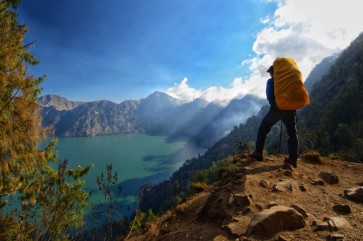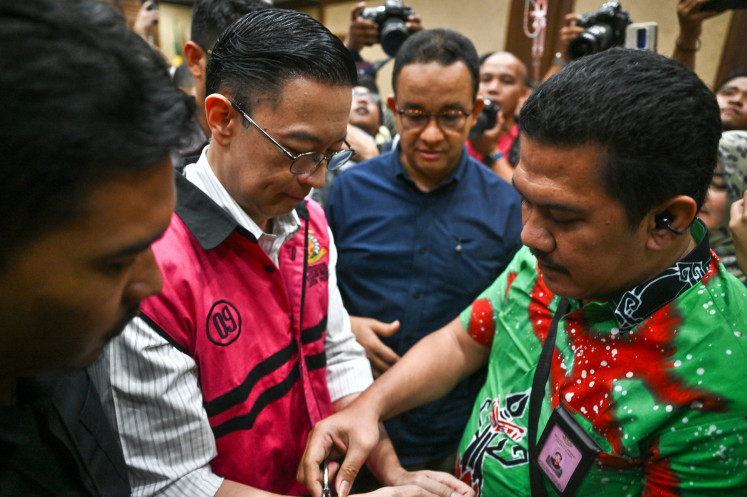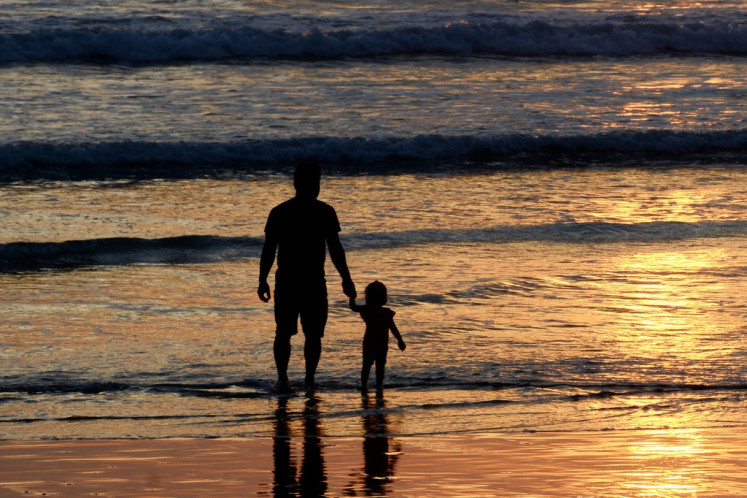Popular Reads
Top Results
Can't find what you're looking for?
View all search resultsPopular Reads
Top Results
Can't find what you're looking for?
View all search resultsYour letters: Papuan population and killing accusation
The issue of Papua human rights violations is heating up again since (AHRC) published a few months ago a special report on human rights violations that occurred in the central highlands of Papua from 1977 to 1978
Change text size
Gift Premium Articles
to Anyone
T
he issue of Papua human rights violations is heating up again since (AHRC) published a few months ago a special report on human rights violations that occurred in the central highlands of Papua from 1977 to 1978.
In this 40-page report, the AHRC revealed that more than 4,000 Papuans had died as a result of Indonesian Military (TNI) operations, such as air bombardments and shootings using OV-10 Bronco aircraft from the US as well as several types of helicopters from Australia.
Let us compare this issue with other events that occurred three years ago when the Indonesian government was being cornered for the genocide issue in Papua. This issue has grown from an academic publication from the University of Sydney based on Jim Elmslie's research in 2010 about genocide in Papua. At that time, the Australian government seemed to let these allegations spread wildly.
In a report titled West Papuan Demographic Transition and the 2010 Indonesian Census: Slow Motion Genocide or not? published by the University of Sydney's, Center for Peace and Conflict Studies, Jim Elmslie mentions that the number of indigenous Papuans (OAP) in Papua and West Papua in 1971 was as many as 887,000. In 2000, Elmslie reported the OAP population had increased to 1,505,405.
Furthermore, Emlslie predicted what should be the number of indigenous people by assuming a fixed growth rate of 1.8 percent per year. Accordingly, in 2010 there should have been as many as 3,612,856 Papuan people. That figure is slightly higher than that released by the Indonesian government, which is 3,593,803.
At least Elmslie was right about the population growth rate of 1.8 percent per year in Papua. And this figure is high when it is compared with the rate of population growth in Indonesia, which is about 1.49 percent per year, according to the head of the National Family Planning and Population Board (BKKBN), Fasli Jalal.
Many factors influence the high population growth rate in Papua, among which are that thousands of Papuan refugees have returned home from Papua New Guinea since 2007.
They are victims of political conflict caused by the Free Papua Movement (OPM) that forced many Papuans to cross the border from the 1970s until 1985. According to a fellow Catholic clergyman who served in the Parish of St. Nicholas, Gerard Town Kiunga, Papua New Guinea, in his area there are still about 9,000 refugees from Papua. They are scattered in 17 different locations or villages or refugee camps around the border of Papua New Guinea and Papua.
We could also assume that 4,000 Papuans from the central highlands, which were reported by the AHRC to be missing were also a part of the tens of thousands of Papuan refugees who are still living in refugee camps in Papua New Guinea.
If the AHRC is really concerned with human rights issues in Papua, they should act and help those 9,000 Papuan refugees so that they can be repatriated. The AHRC should not just rail against the Indonesian government. They should do something more productive to improve the situation in Papua.
As a nation we should be aware of all allegations using human rights violations and genocide in Papua. Human rights issues in Papua always appear a lot of ways. Papua will continue to be a battlefield for variety of interests. Remember that the allegations of human rights violations in Papua will lead to fulfilling political interests, that is self-determination.
Bang Oke
Papua










